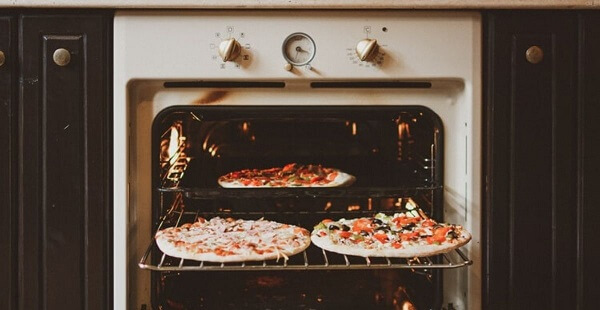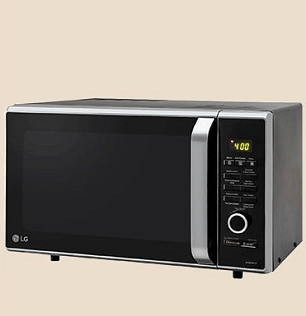Difference between OTG and MicrowaveIntroductionOTG and microwave ovens are two excellent kitchen tools, and some people consider them vital because they use them for baking and preparing multiple meals throughout the day. Yet, many individuals are unaware of how they differ from one another. If you have a thorough understanding of the appliances, you will be able to decide which one to purchase according to your personal needs and usage. So, to start with how these both came into existence, the term "oven" generally refers to all cooking and heating equipment, any heat chamber. Since it has existed since the discovery of fire, it is a prehistoric phenomenon. Older ovens needed kindling, fire, and manual temperature control, but as people and technology advanced, we have been getting smaller, more efficient ovens. Ovens often use either gas or electricity, depending on the model. Modern ovens use microwave technology. The first type of microwave-based oven was made in the era of world war to cook large amounts of food faster and more efficiently. While microwave-based ovens have gained much popularity because of their versatile functionality, one classic form of the ancient oven is still used primarily in Italy, where they use natural ovens for baking pizzas and in Spain and Mexico bake tortillas and tacos. How does an OTG Work?A conventional oven in a smaller size is known as an oven, toaster, and grill, aka OTG; you may grill, toast, and bake, as the name implies. Nevertheless, the majority of them need more choices for reheating, cooking, or defrosting. The food is cooked in this type of oven using heated coils-the thermostat and internal fan aid in distributing heat and regulating temperature, respectively. OTGs require more time than microwave ovens because it takes time for the electric coils to heat up and provide a more powerful source of heat, because of which the cooking time increases. 
An OTG, as discussed, can be used for toasting, grilling, and baking. If a person only wishes to purchase for these uses, choosing an OTG for daily usage is the right choice. OTGs are tiny, transportable ovens that require additional setup. OTGs are thought to be more cost-effective than microwaves since they require less electricity. This device features coils that transform electricity into heat using nickel/chromium metal alloys. The meal is subsequently cooked from the inside out, thanks to the heat. The majority of OTGs are equipped with knobs for choosing the time and temperature and navigating between options. How does a Microwave Oven Work?A microwave oven can be used for heating, baking and many other kinds of food when compared to ovens. If someone is looking for an all-in-one solution type of appliance for cooking, then a microwave can be the possible solution. 
A microwave oven uses a certain type of electronic wave called a microwave to heat any item from the inside out. These microwaves are generated using a certain type of electromagnetic wave, which has a certain frequency level ranging from 300 MHz to 300 GHz; a range of radio waves and infrared radiation make up these electromagnetic waves. When compared to OTG, the pre-heat period is shorter. Instead of a fan, the interior has a turntable that revolves around cooking the food evenly. When food is kept in a microwave oven, the microwaves are thrown towards the food and, after absorption, they are converted to heat, which in turn heats up the food from the inside rather than heating/frying it up from the outside. Moreover, a microwave oven has the ability to operate purely on electricity; hence, it does not require any additional prerequisites or setup. Key factors to ponder upon while buying any one of them:1. Storage Capability Speaking of storage capability, OTGs can hold up to 60 litres, whereas certain microwaves can hold up to 32 litres. However, a microwave's spinning surface is extremely narrow, making it difficult to fit larger objects, particularly rectangular ones. 2. Utility OTG has racks, and additional trays may be added. In summary, you can bake in several batches. OTG features knobs instead of a digital display like microwaves do, making it challenging to keep track of time. 3. Price In terms of price, OTGs are a bit less expensive than microwaves. Moreover, the latter uses a lot of power compared to OTG. Microwave Oven and its HistoryAncient Oven Baking Humans first used baking when they took wild grass grains, soaked them in water, and then mashed the combination into a paste resembling broth. The mixture was cooked by pouring it onto a hot, flat rock, producing a material that resembled bread. The paste was then cooked over hot embers when humans had mastered fire, which simplified the process of creating bread because it could now be manufactured whenever fire was made. While the latest covid pandemic led to many people becoming home bakers and learning to use OTG and microwave ovens in their homes to make home-made biscuits, pizza, cakes, and much more, the trace of the oldest ovens to have ever existed are dated back 6,500 years, which were found in Croatia in the year 2014. Yeast, previously used to make beer, was used by the Ancient Egyptians to manufacture bread in these traditional ovens. In 600 BC, bread-baking in Ancient Greece sparked the development of enclosed ovens. Archaeological digs from Turkey (Hacilar) to Palestine (Jericho (Tell es-Sultan) have uncovered ovens and worktables that date to 5600 BC. Throughout the Roman Empire, baking was very popular. Because pastries were regarded as extravagant and Romans liked festivity and celebration, the pastry cook (also known as the 'pastillarium') started to become a career for Romans around 300 BC. As a result, pastries were frequently prepared specifically for huge feasts, and any pastry chef who could create brand-new, delectable confections was highly regarded. There were around 300 pastry cooks in Rome in the first century AD, and Cato wrote about how their creations allowed them to prosper professionally and socially. Cato mentions a huge variety of bread, such as libum (flour-based sacrifice cakes), placenta (groats and cress), spira (contemporary flour pretzels), scibilata (tortes), and savaillum (sweet cake), and globus apherica (fritters). Banquets and dining halls frequently had a wide variety of these, each with its variants, ingredients, and patterns. The Romans possessed mills to process grain into flour and an oven with a chimney for baking bread. In Rome, a guild of bakers was founded in 168 BC. Commercial Oven Baking Roman baking subsequently gained popularity across Europe and eventually reached eastern Asia. Commercial business in London had a lot of rules attached by the 13th century, including baking. For food, they were made to establish a system "so there was little likelihood of false measures, tainted food, or substandard manufacturers." The requirement that each baker has "the impression of his seal" on bread was one of twenty restrictions that were in effect at the time and applied only to oven bakers. Other agents, such as baking soda, became more popular in the 19th century. Bakers frequently produced their items at home before hawking them on the streets. This scenario was so typical that Rembrandt, among other artists, depicted a pastry maker selling pancakes to eager youngsters in the streets of Germany. Pastry chefs in London marketed their products using handcarts which evolved into a system for delivering baked products to homes, significantly raising demand. The world's first outdoor cafe serving baked products was created in Paris, and baking soon established itself as a fine craft. Baking requires a heated, enclosed area, usually an oven; ancient clay ovens were used in the past. Electricity, gas, coal, or wood can all be used as fuel. You can manually add and remove objects from an oven mitt or a peel, a long-handled instrument designed for the job. Many commercial ovens include two heating elements: one for baking, which heats food mostly by radiation and thermal conduction, and one for broiling or grilling, which heats food primarily through convection and conduction. The Dutch oven, also known as a bake kettle, bastable, bread oven, fire pan, bake oven kail pot, tin kitchen, roasting kitchen, doufeu (French: "gentle fire"), or feu de compagne (French: "country oven"), was once the latest in fireside cooking technology, replacing the cooking jack and combining "the convenience of pot-oven and hangover oven." Ovens have an interior hollow chamber that may be heated in a regulated manner. They have been used for various purposes needing regulated heating ever since antiquity. Difference between OTG Oven and Microwave Oven:
Next TopicDifference between
|
 For Videos Join Our Youtube Channel: Join Now
For Videos Join Our Youtube Channel: Join Now
Feedback
- Send your Feedback to [email protected]
Help Others, Please Share










